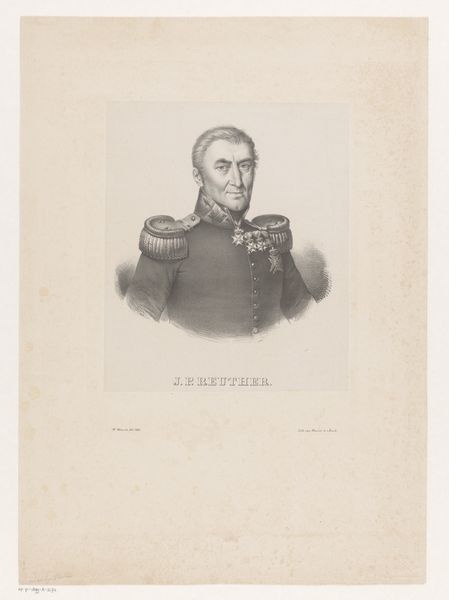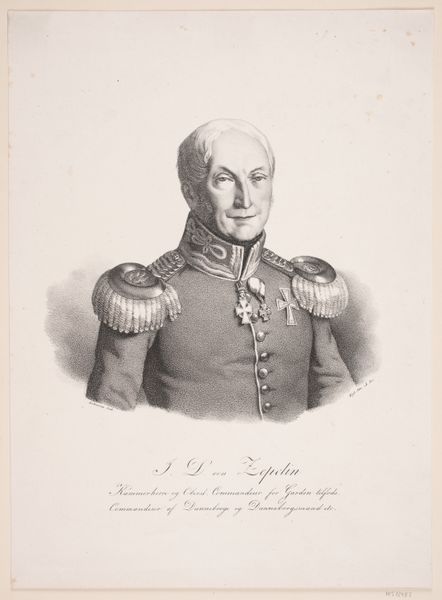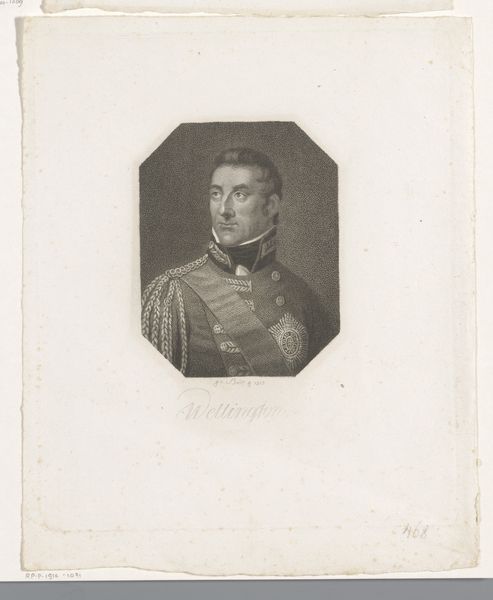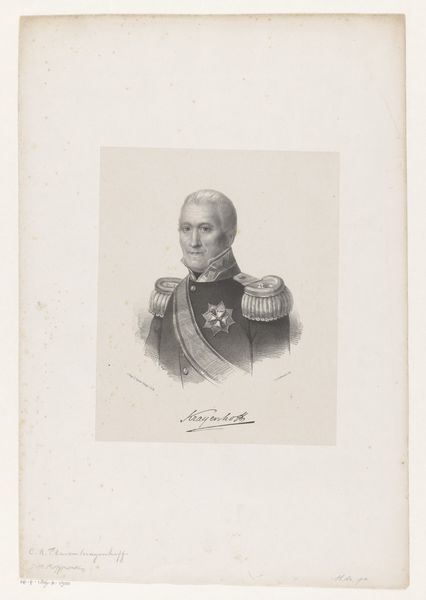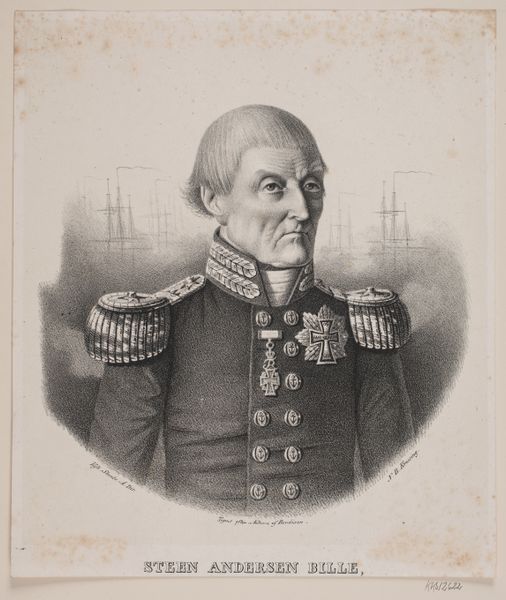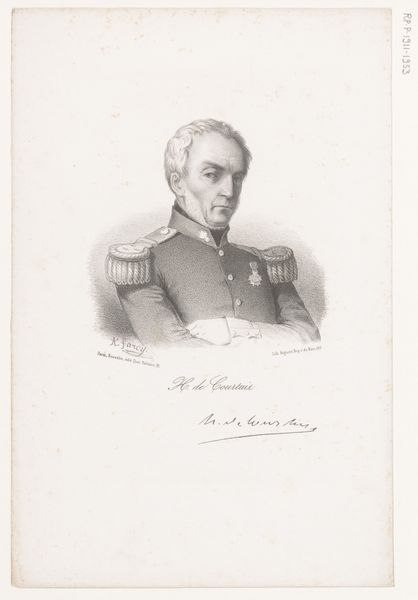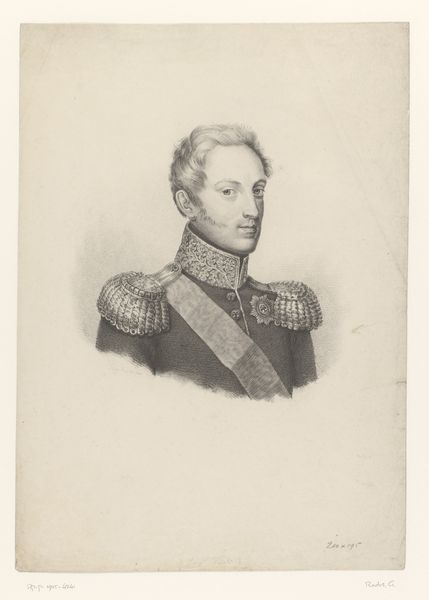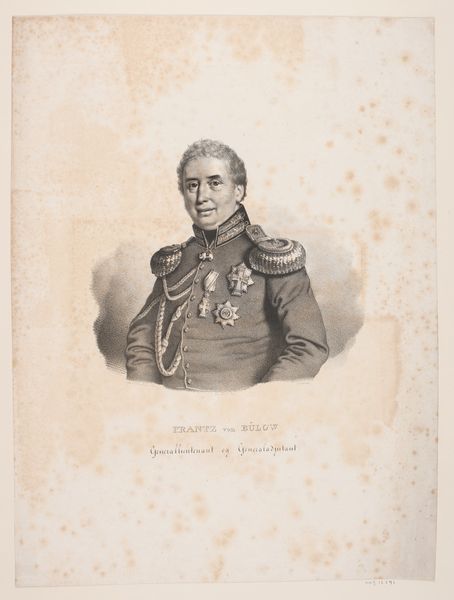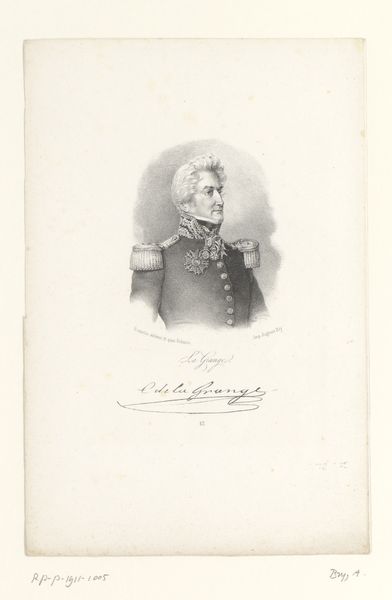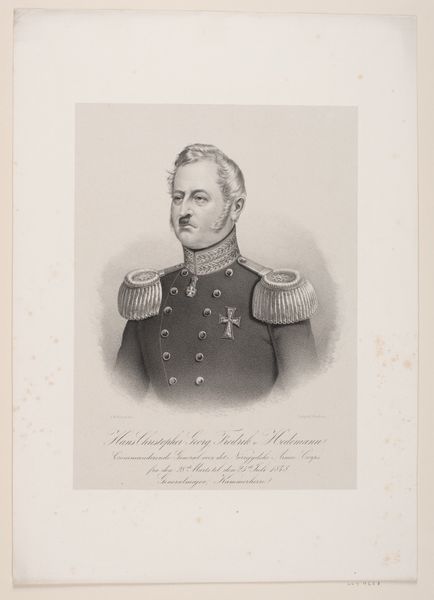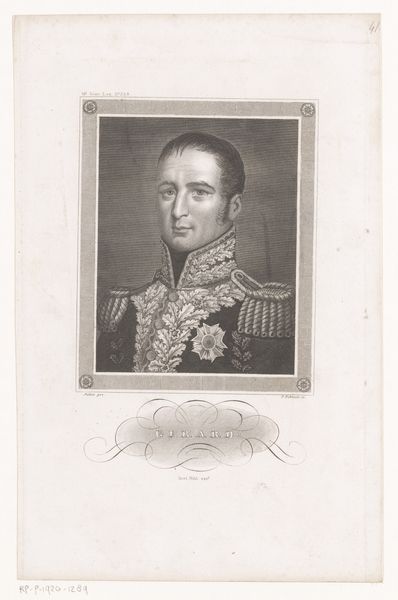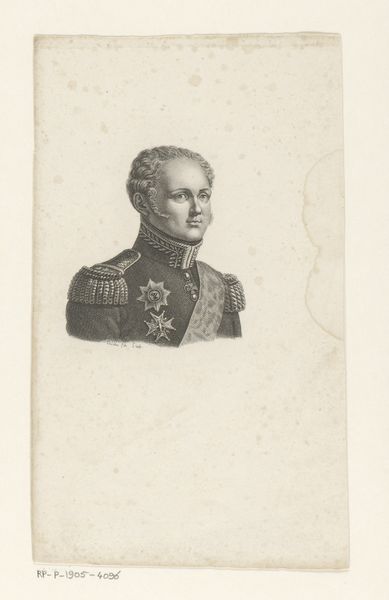
Portret van Huibert Gerard van Nahuys van Burgst 1834 - 1883
0:00
0:00
drawing, graphite
#
portrait
#
pencil drawn
#
drawing
#
neoclacissism
#
pencil sketch
#
pencil drawing
#
graphite
#
portrait drawing
#
academic-art
#
realism
Dimensions: height 253 mm, width 165 mm
Copyright: Rijks Museum: Open Domain
This is a portrait of Huibert Gerard van Nahuys van Burgst, made by Antonie Johannes Groeneveldt, and it's a lithograph, a print made by drawing on a flat stone with a greasy crayon, then inking the stone and printing it on paper. The process gives a soft, almost velvety look to the lines, especially noticeable in the shading of the face and uniform. Look closely, and you'll see that the artist has built up the image with countless tiny strokes, almost like a drawing. Lithography was a relatively new technique at the time, allowing for the mass production of images. This portrait, therefore, speaks to broader social issues of class and labor; while portraying a member of the elite, it also reflects the rise of industrial techniques that made art more accessible, changing the economics of image making. The choice of lithography is significant. It bridges the gap between handmade and machine-made, echoing the shifting social landscape of the 19th century. It prompts us to consider how technological advancements can democratize art while simultaneously reinforcing existing power structures.
Comments
No comments
Be the first to comment and join the conversation on the ultimate creative platform.
